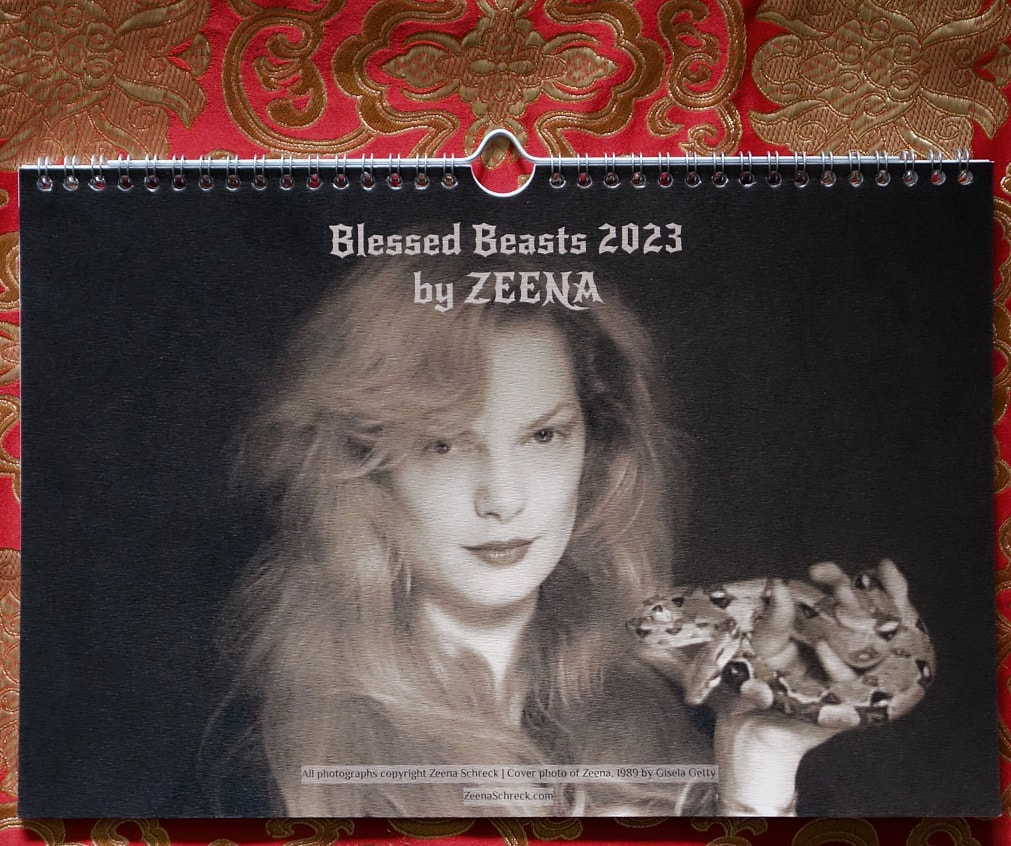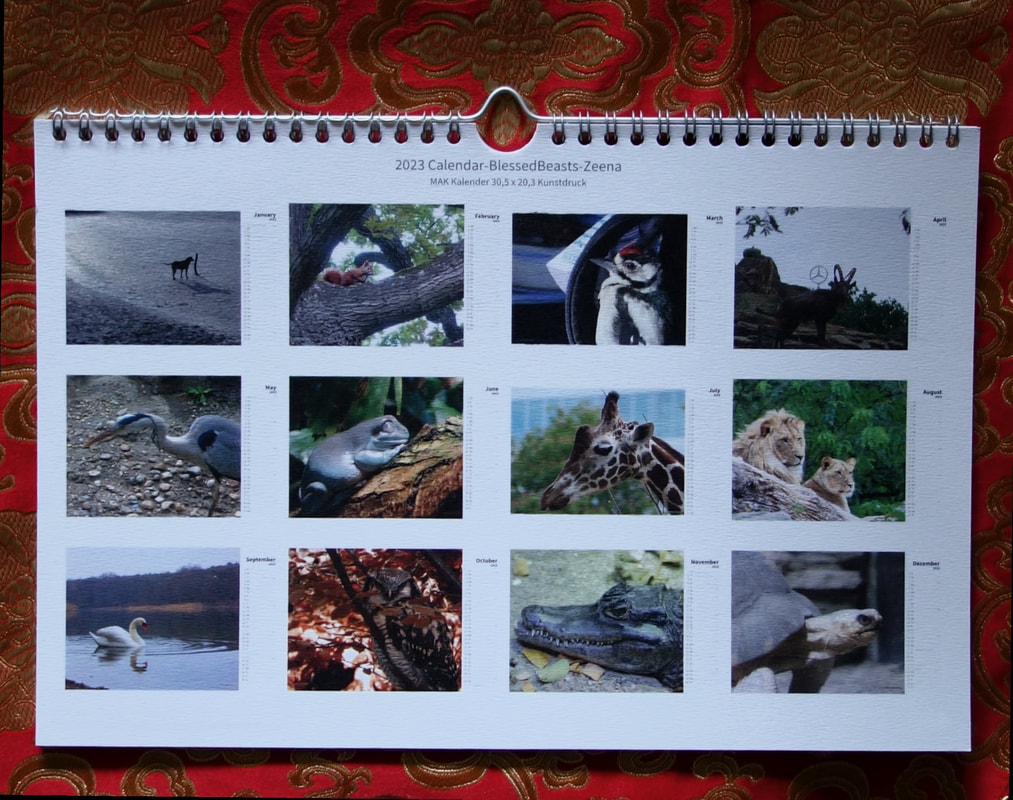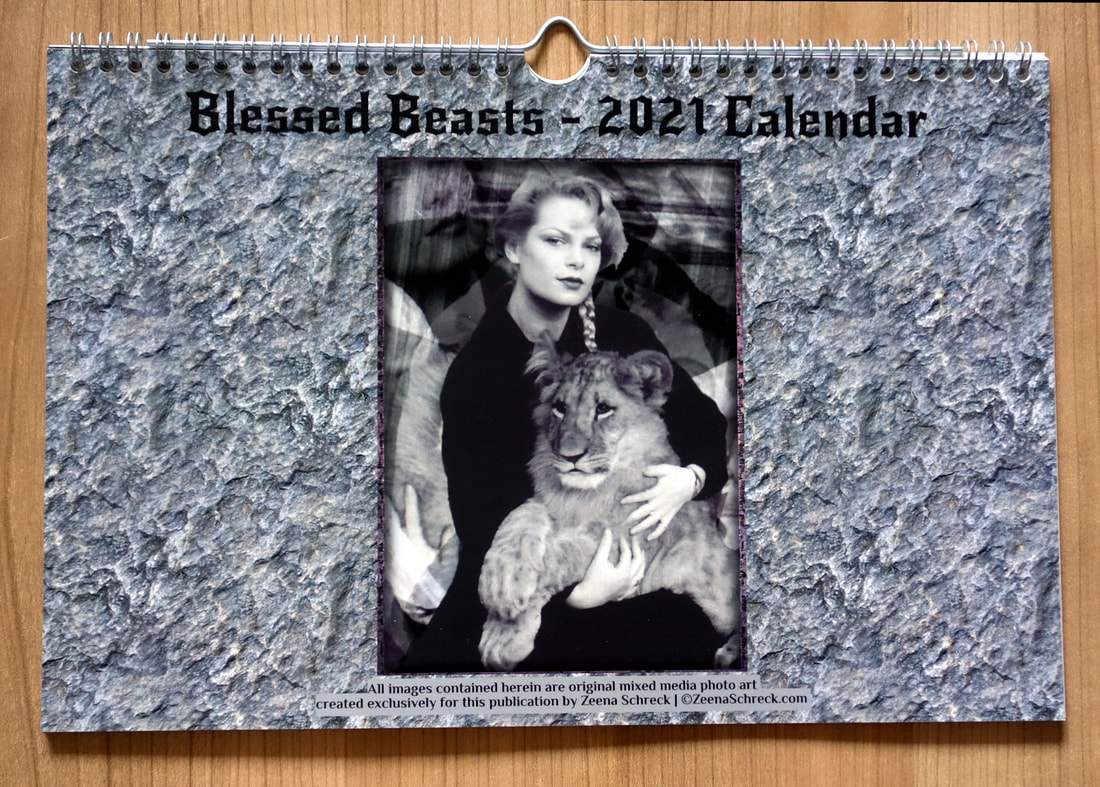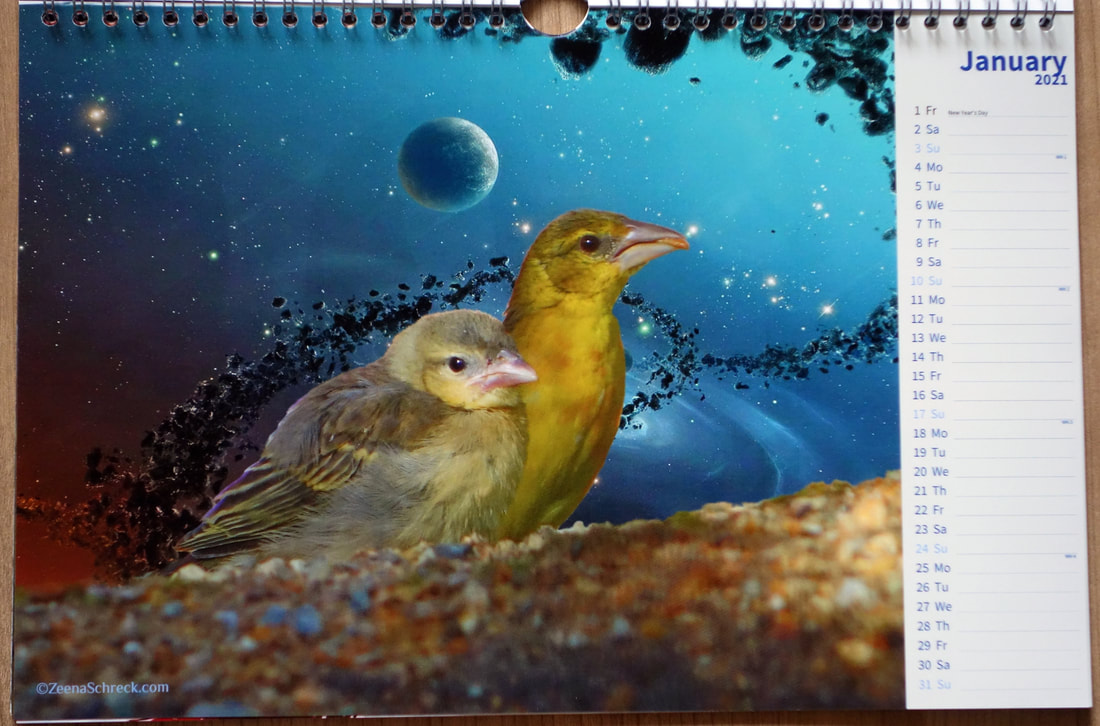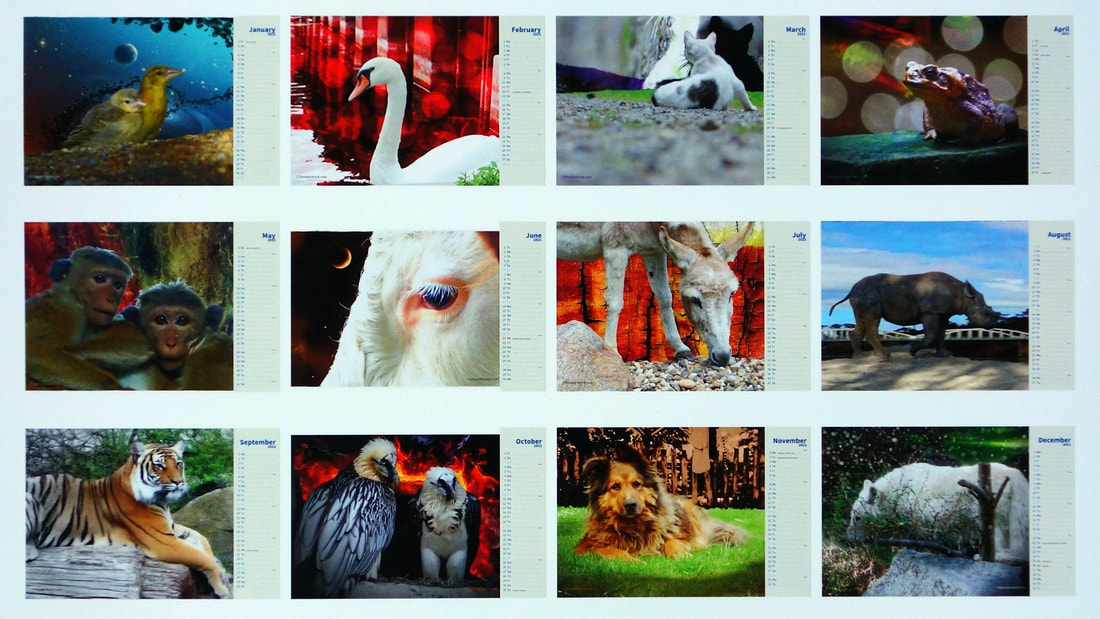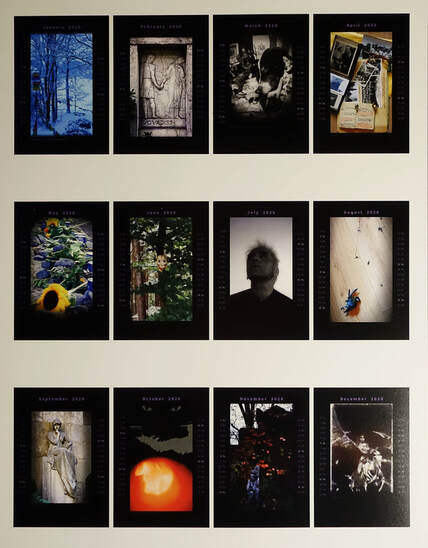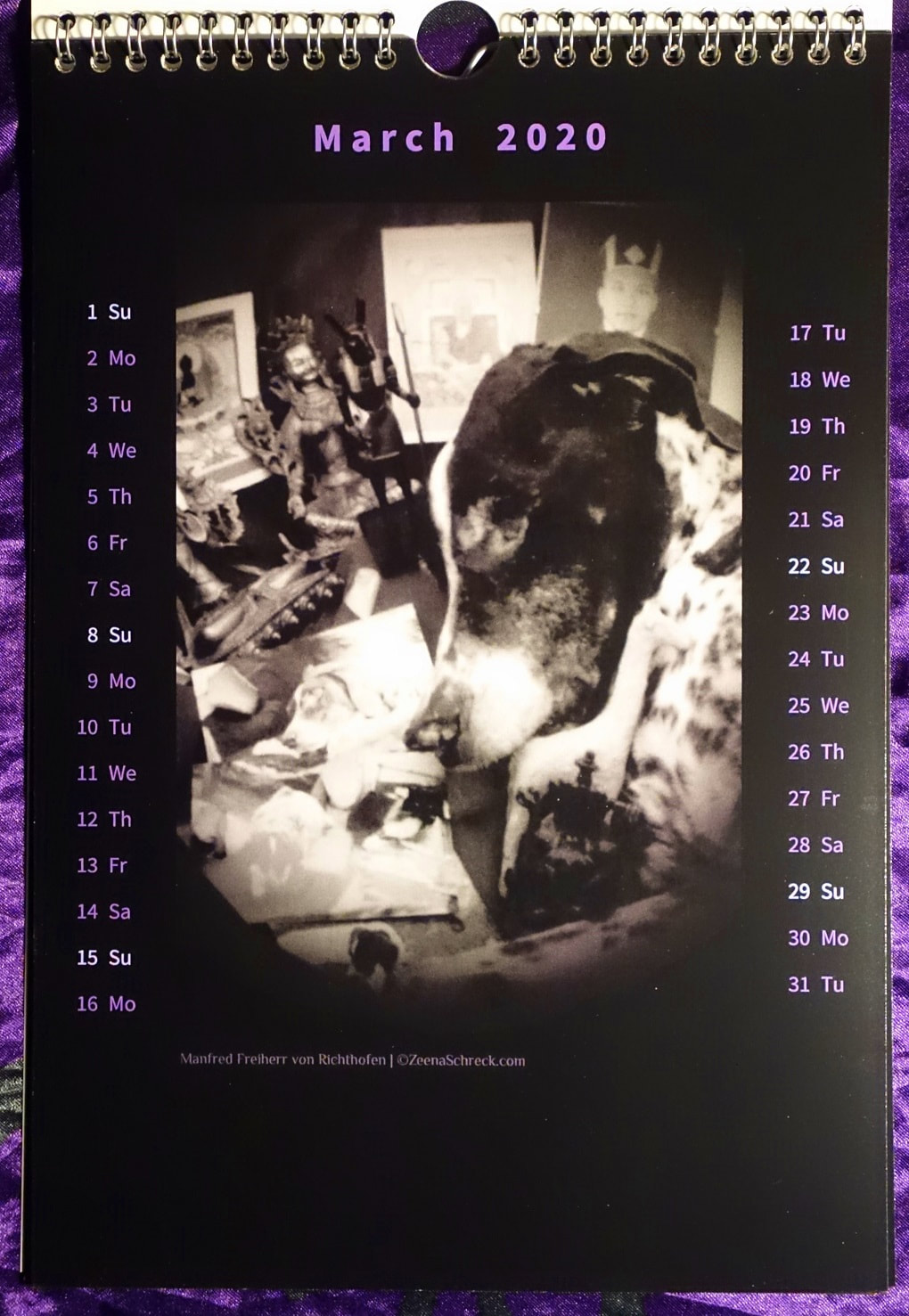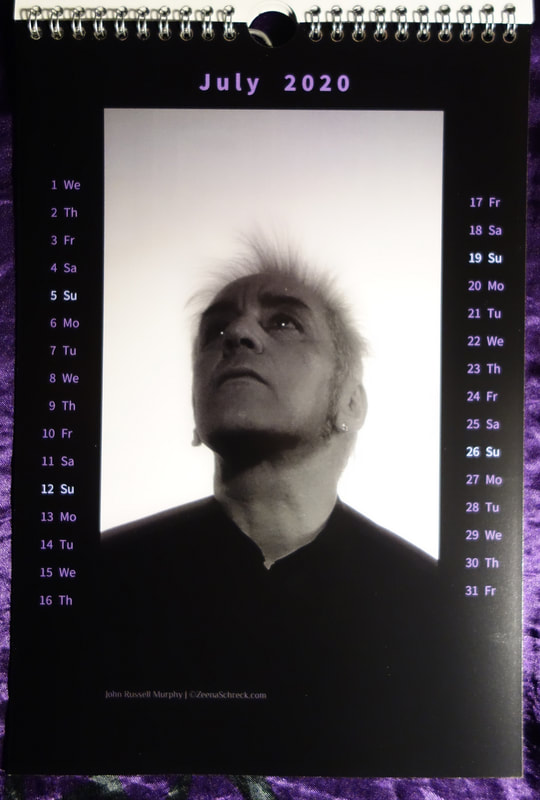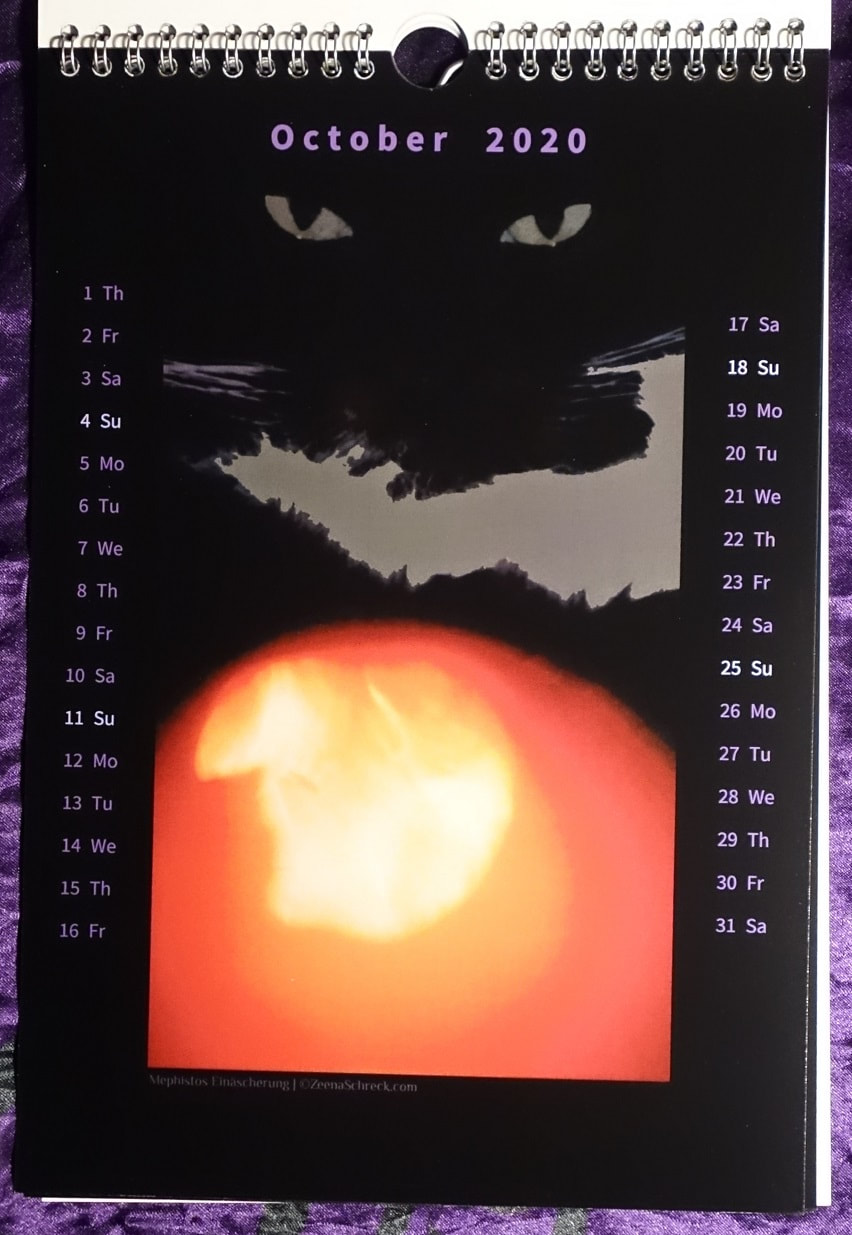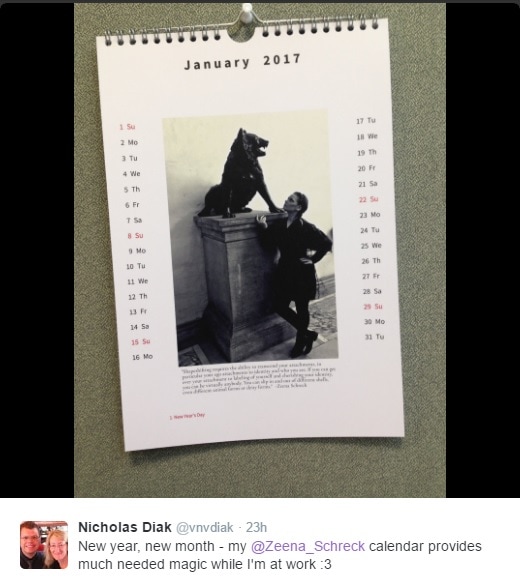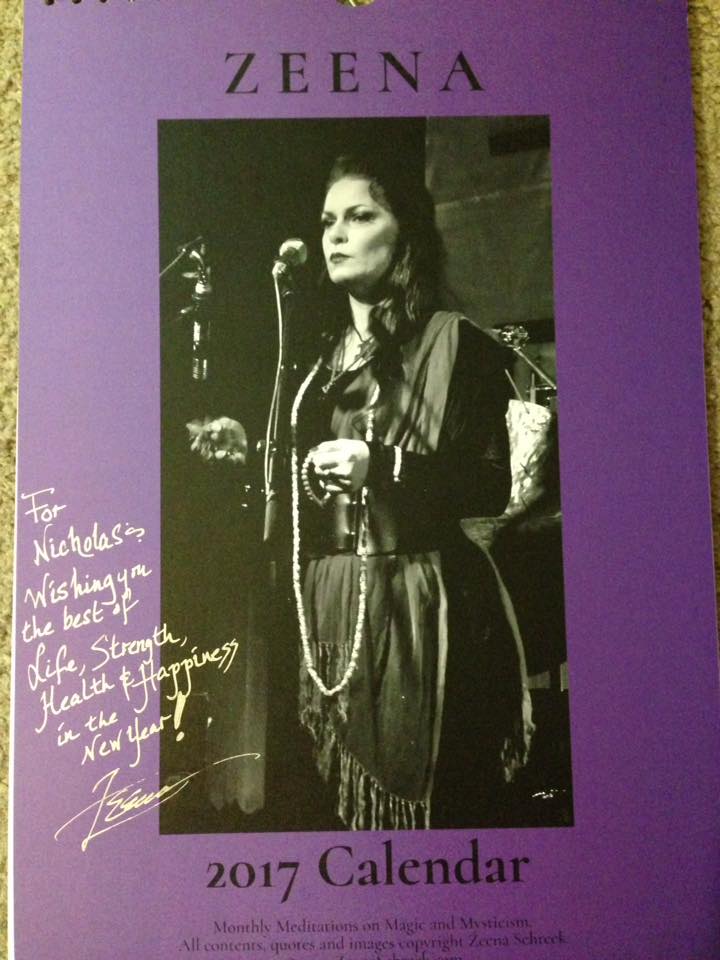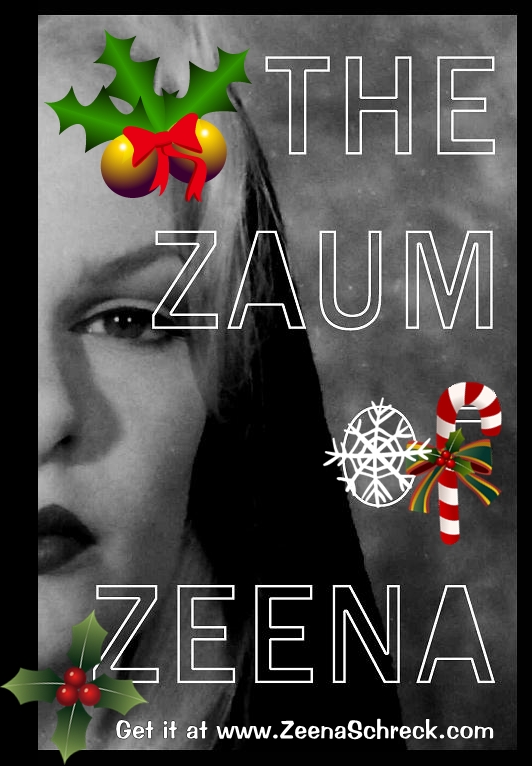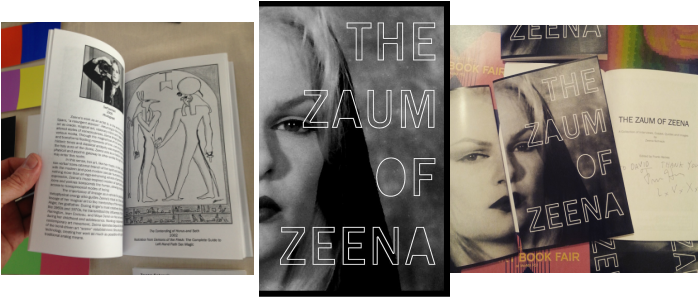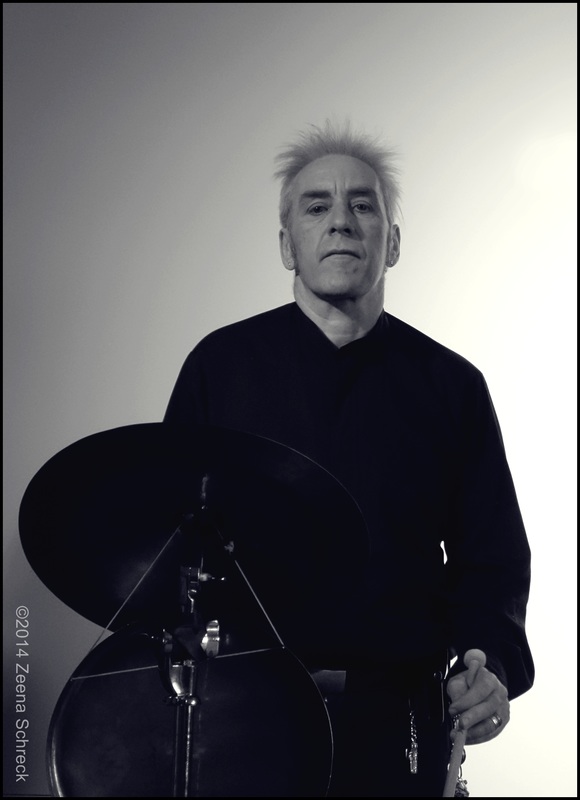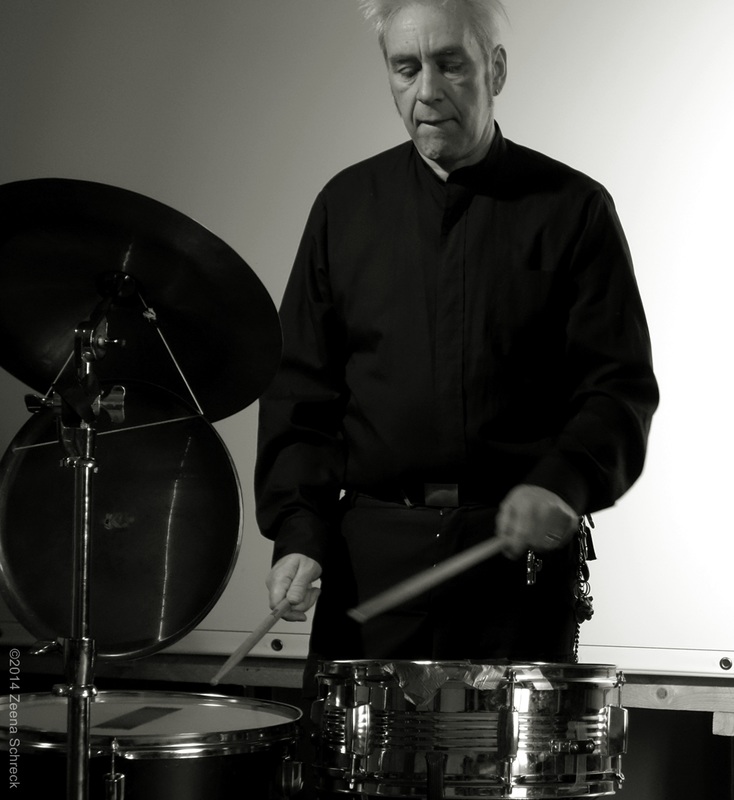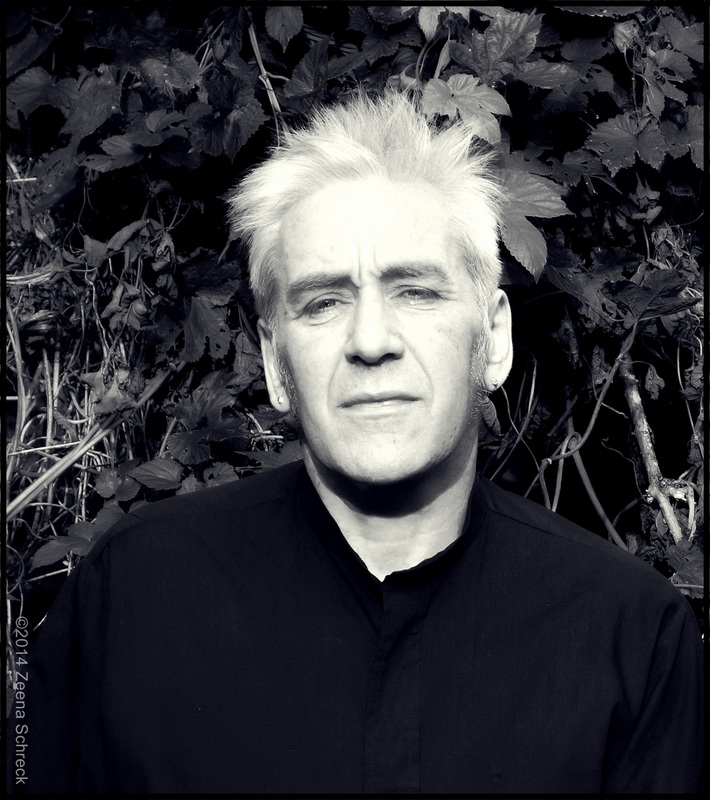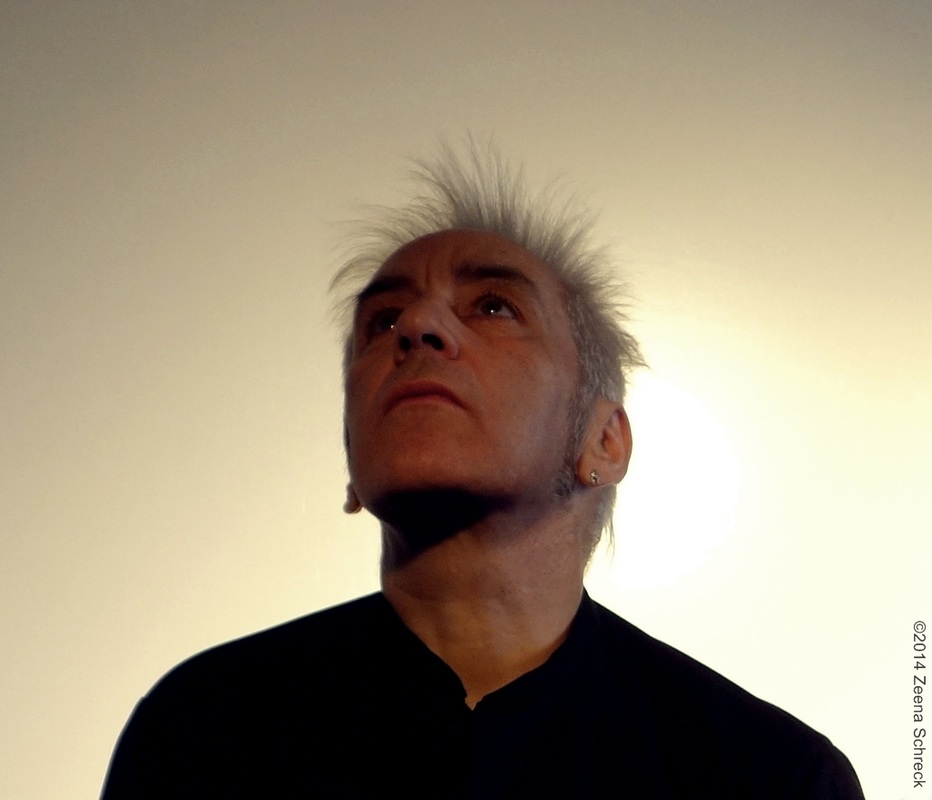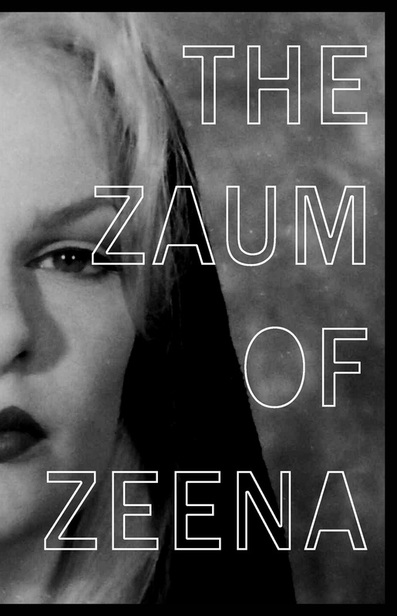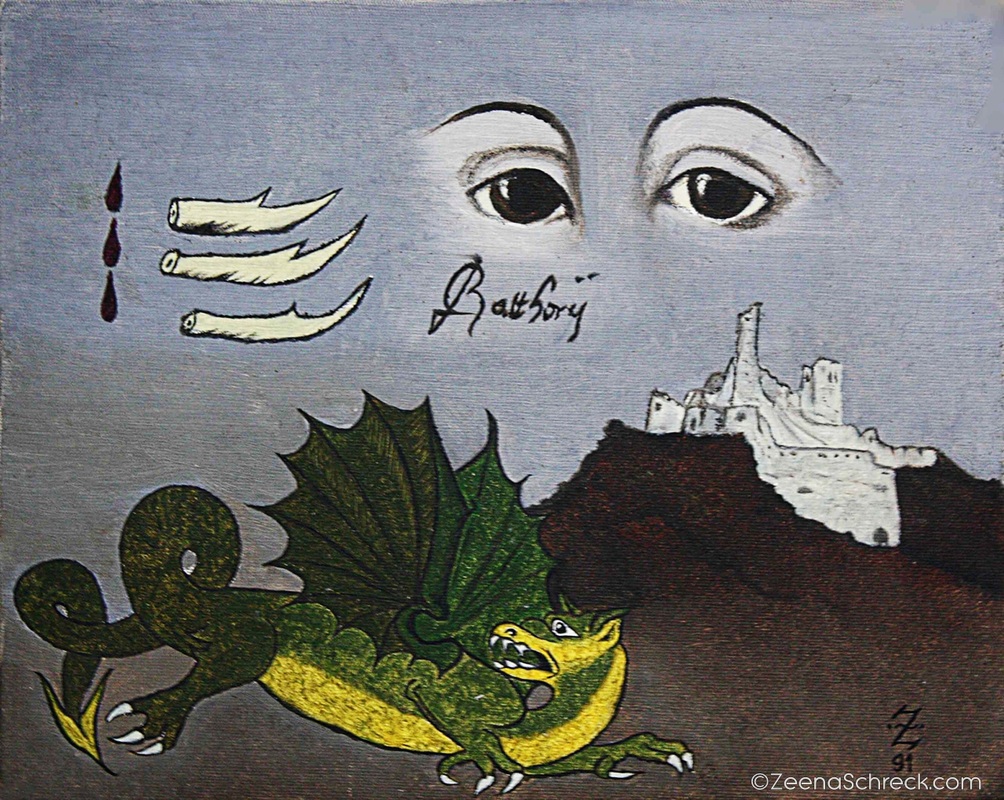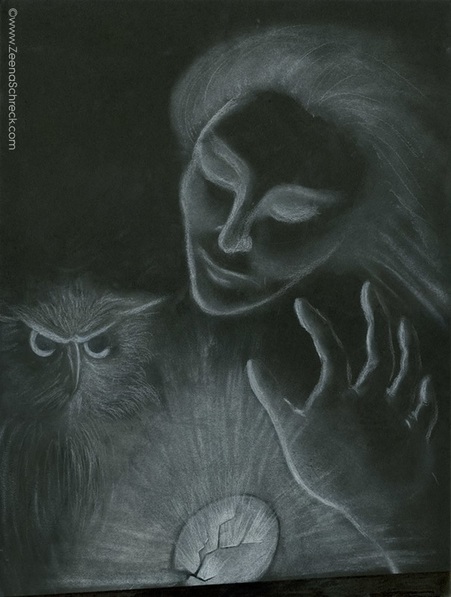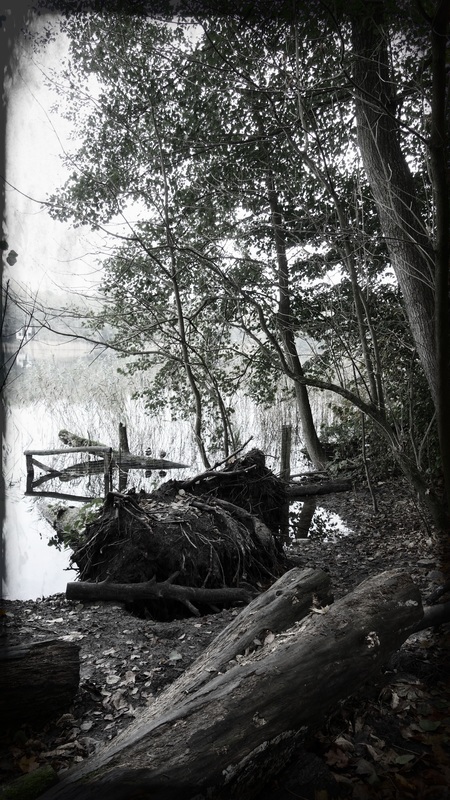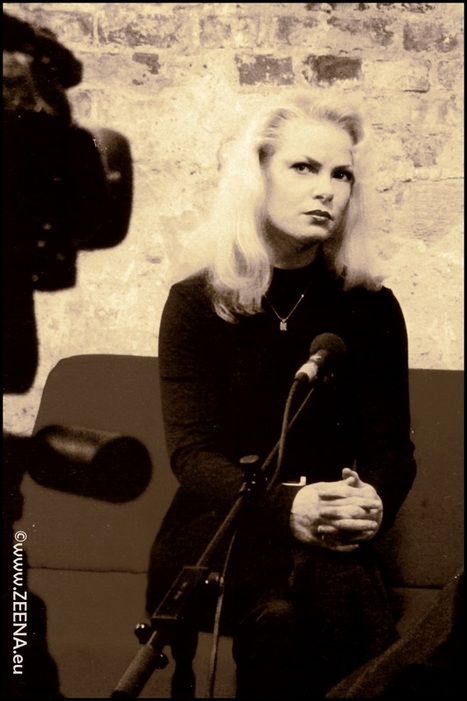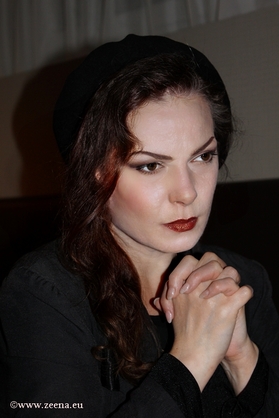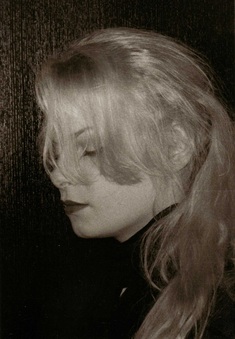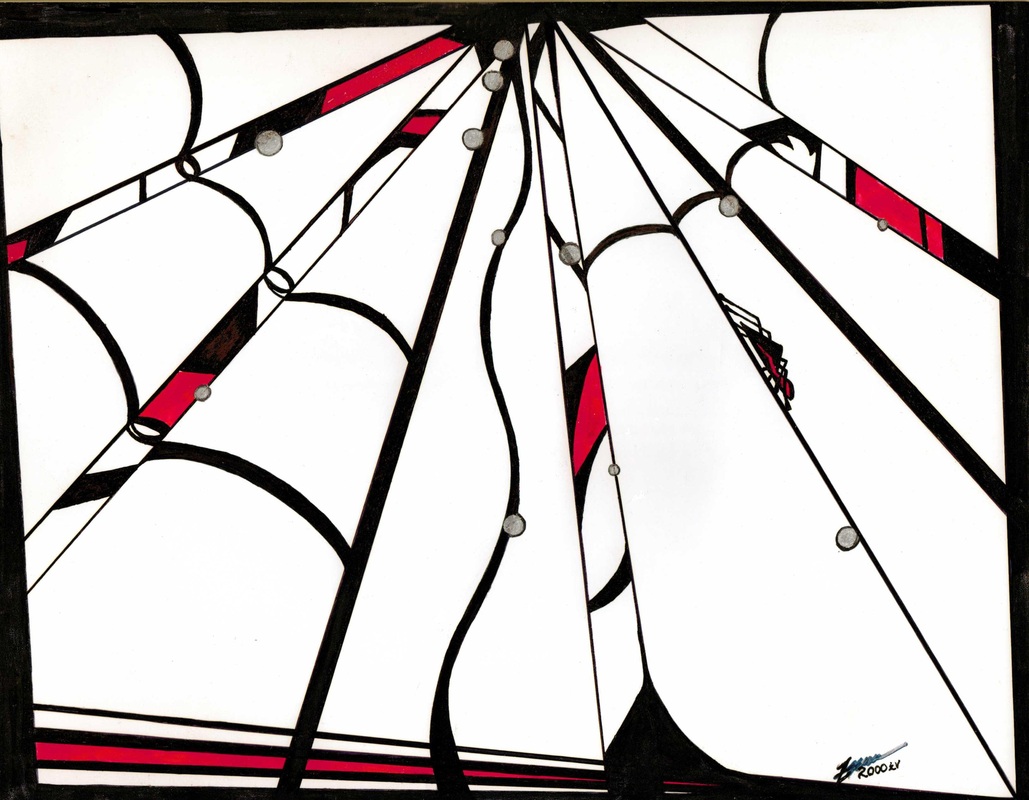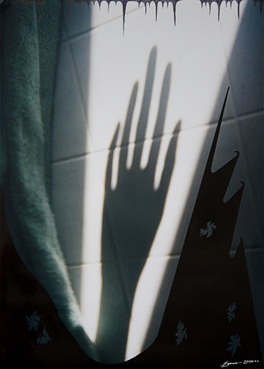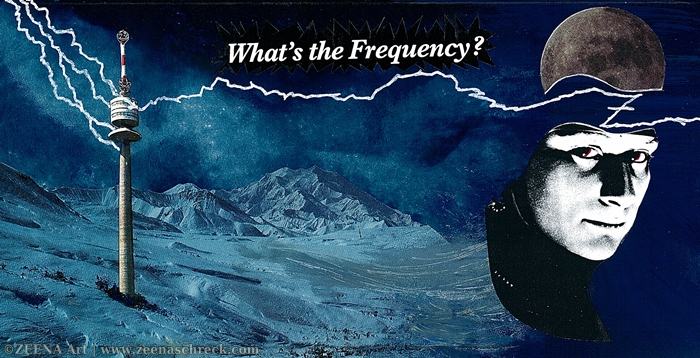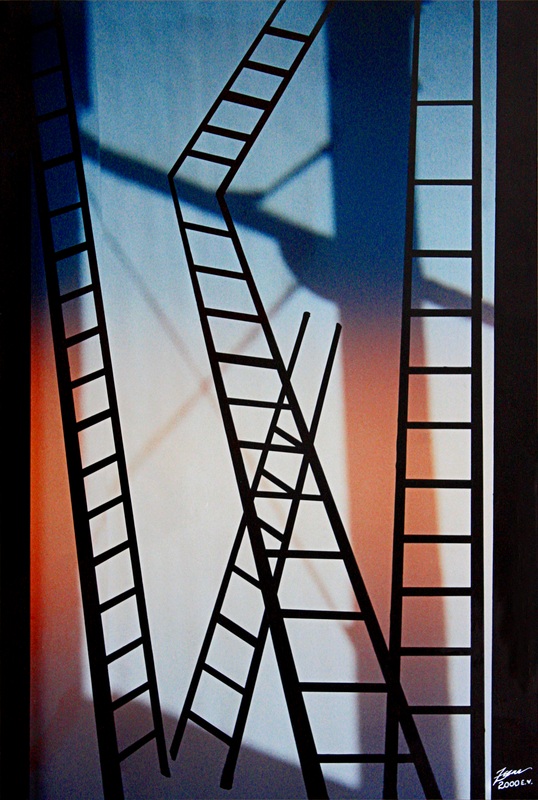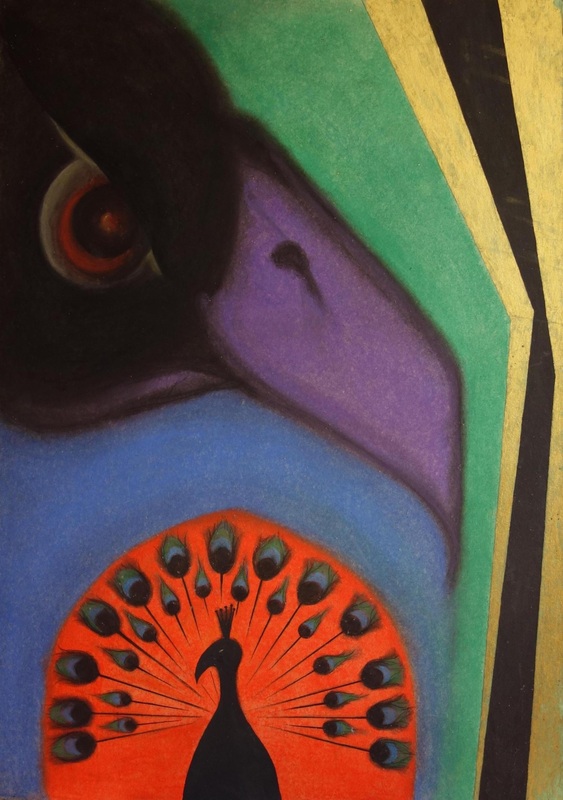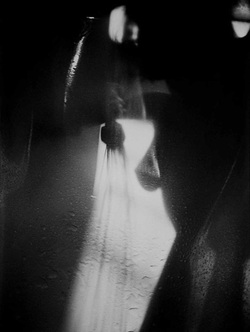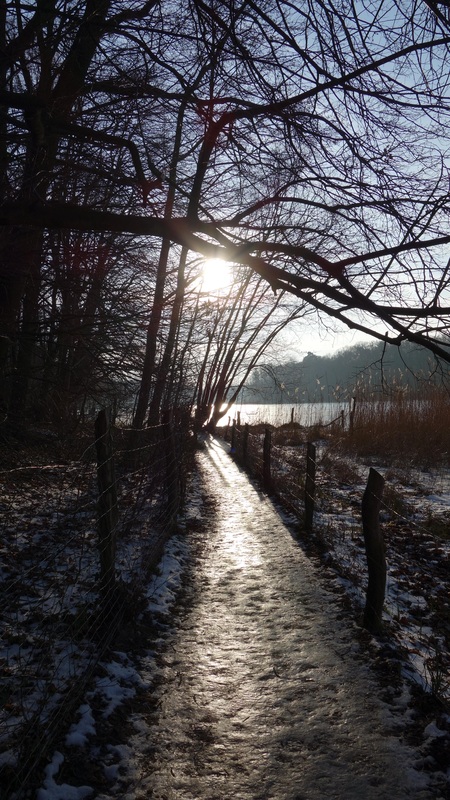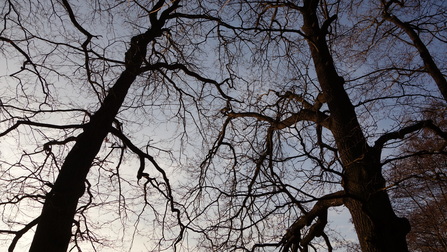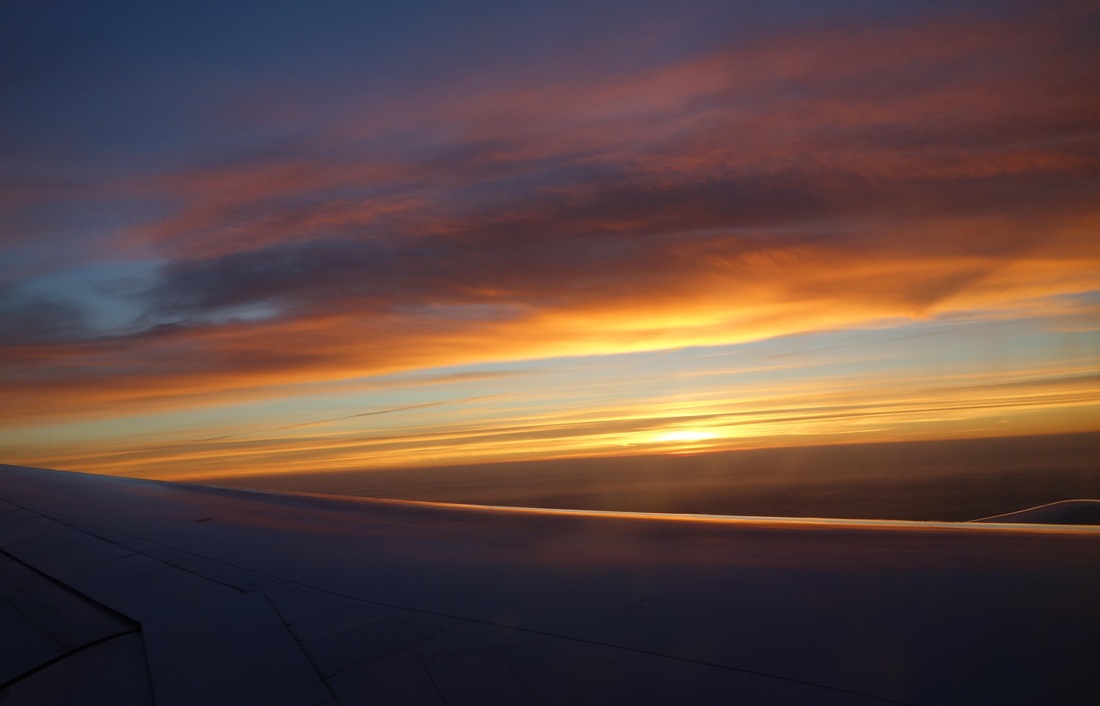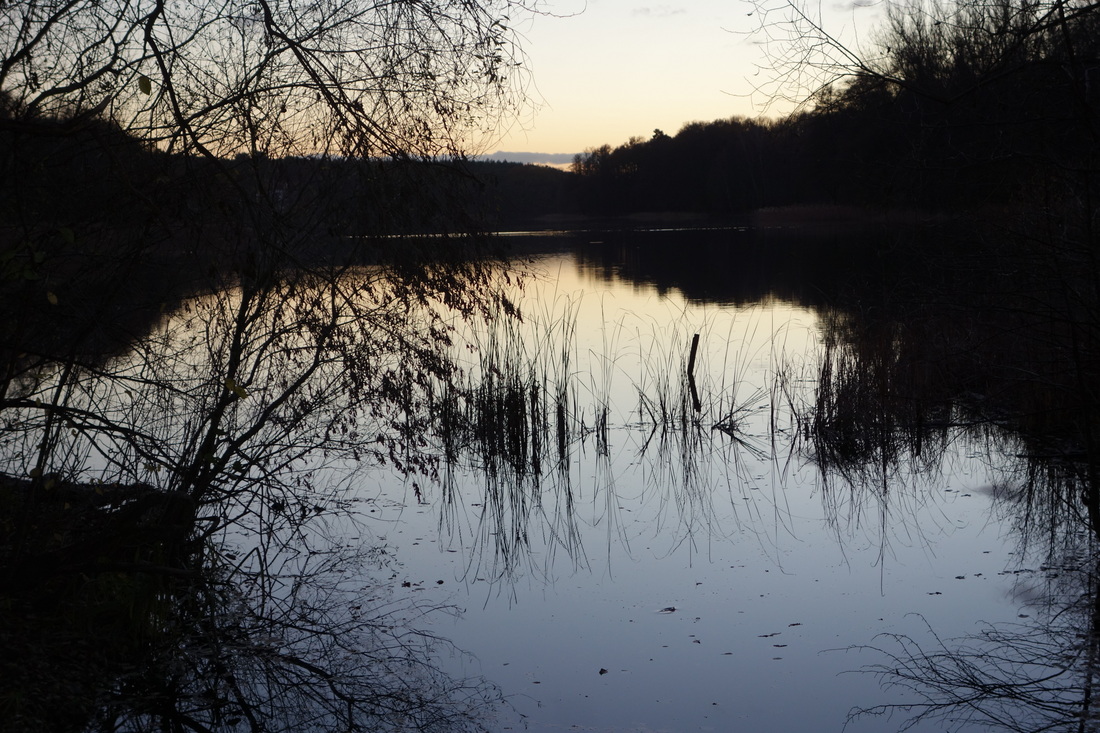Blessed Beasts 2023 Fine Art Calendar By ZeenaFor World Animal Month coming in October: Zeena honors our non-human totems, familiars, spirit guides and animal companions in a limited edition 2023 fine art calendar. Vibrant original works photographed by Zeena for monthly contemplations on animal wisdom, welfare, rights and liberation. A celebration and appreciation for the magical and spiritual bonds between all species of sentient beings. Personalized autograph option located in the drop-down menu.*
(*If you have animal companions for which you'd like Zeena's personalized blessings - as well as for yourself - simply send your and/or the animals names to [email protected] to be added in the calendar inscription.) -ORDER HERE- About the paper: *All images are printed with classic look on Hahnemühle photo art print paper. *High quality inkjet printing process. *Paper surface is fine matte and textured. *Weight of 250 g/m² *Dimensions: 300x200mm / 8”x11½” *Suitable for cropping and framing after use.
3 Comments
To celebrate October World Animal Month*, Zeena honors our non-human companions in a limited edition 2021 photo-art calendar. Vibrant original works for monthly contemplations on themes of animal rights and spiritual liberation. The calendar is printed on fine art quality premium paper suitable for cropping and framing after use. Dimensions: 300x200mm / 8”x11½” Personalized autography option located in the drop-down menu. If you have animals (or a group of animals) for which you'd like Zeena's personalized blessings, simply send your and their (the animals) names to [email protected] to be added to her personalized message. To ORDER click HERE. To U.S. Customers: If you're ordering this as a gift, please consider that due to severe restrictions on parcels entering the U.S. from overseas, delivery is only allowed via ship and can take up to 8 weeks to reach destination. You will receive an email notification the day your order is sent, with tracking number, so you can follow its status. Message from Zeena about the calendar below. *A brief history of World Animal Day (and month) at the end of this post. Message from Zeena:“How many of our lives would feel incomplete without our magical familiars, totem animals, or service and emotional support animals? How many of us also feel compassion for the unseen, forgotten, unloved, feral or endangered animals? Within my 'Blessed Beasts' calendar, each tableau reveals the deeper emotional intelligence of the lovely creatures depicted. Sometimes it's in their expression, their body language, a knowing glance or an attitude which conjures a sense of loyalty, companionship, nobility, or wisdom. For pagan and shamanic religions, all animal species have inherent magical powers associated with and symbolizing different aspects of different gods. On the basis of my Tibetan Buddhist yogic training, I patiently develop a rapport with the animals I photograph by chanting specific tantric Buddhist mantras which gradually relax and open the beasts to loving-kindness and the liberating vibrations of these ancient sacred syllables. Hence the title, 'Blessed Beasts.' In relation to the theme of the 2021 calendar, as well as October being World Animal Month, I ask you to consider donating or volunteering to any animal welfare organizations of your choice (if you don't already). In these difficult times, during the world-wide pandemic and its collateral damage, let's not forget the brave warriors who risk their own safety, health and emotional well-being to continue caring for animals in need. I have my preferred animal aid organizations to which I regularly contribute. But it really doesn't matter whether you do so for a small animal protection group in your own town, or to the neighborhood feral cat lady or bird man who contributes their free time caring for injured and sick wildlife, or whether you choose a reputable international organization – please consider making a donation to help any of them! For more information on spiritual practices for your animals, including prayers for sick and dying animals, I recommend Lama Zopa's Enlightenment for the Dear Animals website at https://enlightenmentforanimals.org/ In closing, I send blessings and prayers to all animals and those humans who help them, and especially those who have suffered and perished this year as the result of natural and man-made disasters. May the creatures you aid today return to you as Enlightened Mother Beings of your future lifetimes! -Om Mani Padme Hum- ~Zeena" Brief History of World Animal Day/Month:
'World Animal Day' is celebrated each year on October 4th. World Animal Day was originated by the specialist in canines, Heinrich Zimmermann. He organized the first World Animal Day on 24 March 1925 at the Sport Palace in Berlin, Germany. Over 5,000 people attended this first event. The event was originally scheduled for 4 October, to align with the feast day of Saint Francis of Assisi, a nature lover and patron saint of animals and the environment. However the venue was not available on that day. The event was moved to 4 October for the first time in 1929. Initially he found a following only in Germany, Austria, Switzerland, and Czechoslovakia. Every year Zimmermann worked tirelessly on the promotion of World Animal Day. Finally, in May 1931 at a congress of the International Animal Protection Congress in Florence Italy, his proposal to make 4 October World Animal Day universal was unanimously accepted and adopted as a resolution. Today, World Animal Day is a global event that unites the animal protection movement agencies and has expanded to encompass the entire month of October with different events globally. 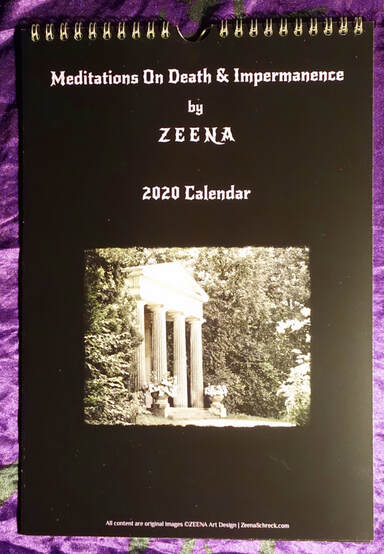 On this day, to commemorate the 100th Armistice Day, Zeena issues a highly personal glimpse into her first hand experiences of death and impermanence. This limited edition 2020 calendar features solemn yet beautiful reminders of Impermanence in its many guises. Whatever your personal battles, great or small, we all experience the same pain, grief and suffering from death, loss and impermanence. Whatever your religion, sexual orientation, race, or political leanings, there is no escaping the one great unifier: Death. Most prefer to look away from that truth, or conversely attempt to glamorize, parody or mock such uncomfortable realities. Yet this beautifully printed, gallery quality art calendar doesn't pander to the ironic or flippant but looks at the greater meaning of death and impermanence in a compassionate and bare manner. Each image reveals Zeena's eye for minimalism, composition, symbolism and tableaux. Several of the artist's first-hand experiences from serving as death's midwife to humans and animals are conveyed. April hints at the life-long trauma to civilian children of war in a still life comprised of WWII souvenirs of the boy, Bernd-Peter S., who wrote in his Tagesbuch of the ordeals he and his classmates endured through the end of the war. In March, we see a religious funerary rite for a loyal canine, Manfred. In October the cremation of feline familiar Mephisto, captured on film, through the small cremation viewing hole. July was the birth month of Zeena's friend, the multi talented musician John Murphy; her stark portrait taken shortly before his untimely death. To all the aforementioned Zeena performed traditional Tibetan Buddhist death rites. These and all the other months are visual reminders on the constant, unpredictable and uncontrollable cycles of life and death. This calendar is printed on fine art quality Premium Paper suitable for cropping and framing after use. Dimensions: 200x300mm / 8”x11½” Personalized autograph option available in the drop-down menu at this link: https://www.zeenaschreck.com/store/p46/2020-Calendar-Meditations-on-Death-and-Impermanence-by-Zeena.html IF YOU MISSED GETTING A 2017 ZEENA CALENDAR: There are still a VERY few left!
First come first serve gets you 10 Euros off. Autograph options in description at http://www.zeenaschreck.com/…/2017_ZEENA_Calendar-Meditatio… Thanks to writer/journalist Nicholas Diak for these images of his own personally autographed ZEENA calendar! Through the Feminine Lens - Women Behind the Camera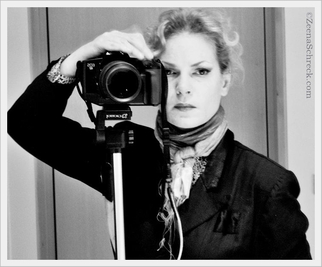 Zeena curates a day of programs for Network Awesome on Saturday 12/12/15, dedicated to the famous and infamous female photographers and filmmakers who have inspired and influenced Zeena's own photography. The stream of programs will remain in the archives at: http://networkawesome.com/2015-12-12 PROGRAM GUIDE: 1. Masters of photography - Diane Arbus (documentary, 1972) Diane Arbus (March 14, 1923 – July 26, 1971) was an American photographer and writer noted for photographs of marginalised people—dwarfs, giants, transgender people, nudists, circus performers—and others whose normality was perceived by the general populace as ugly or surreal. In 1972, a year after she took her own life, Arbus became the first American photographer to have photographs displayed at the Venice Biennale. Millions viewed traveling exhibitions of her work in 1972–1979. Between 2003 and 2006, Arbus and her work were the subjects of another major traveling exhibition, Diane Arbus Revelations. In 2006, the motion picture Fur, starring Nicole Kidman as Arbus, presented a fictional version of her life story. 2. Interview: Charlie Rose - Annie Leibovitz Annie Leibovitz, considered one of America's best portrait photographers, developed her trademark use of bold colors and poses while at Rolling Stone. Photographer Annie Leibovitz was born October 2, 1949, in Waterbury, Connecticut. In 1970 she took a job at Rolling Stone magazine. In 1983 she began working for the entertainment magazine Vanity Fair. During the late 1980s, Leibovitz started to work on a number of high-profile advertising campaigns. From the 1990s to the present, she has been publishing and exhibiting her work. 3. The Films of Maya Deren (3): Ritual in Transfigured Time (1946) Witch's cradle (Maya Deren , M. Duchamp - 1943) Meshes of the Afternoon (1943) Soundtrack by Seaming (Commissioned by BIrds Eye View) Maya Deren (April 29, 1917 – October 13, 1961), born Eleanora Derenkowskaia (Russian: Элеоно́ра Деренко́вская), was one of the most important American experimental filmmakers and entrepreneurial promoters of the avant-garde in the 1940s and 1950s. Deren was also a choreographer, dancer, film theorist, poet, lecturer, writer and photographer. The function of film, Deren believed, like most art forms, was to create an experience; each one of her films would evoke new conclusions, lending her focus to be dynamic and always-evolving.[1] She combined her interests in dance, Haitian Vodou and subjective psychology in a series of surreal, perceptual, black and white short films. Using editing, multiple exposures, jump cutting, superimposition, slow-motion and other camera techniques to her fullest advantage, Deren creates continued motion through discontinued space, while abandoning the established notions of physical space and time, with the ability to turn her vision into a stream of consciousness. Perhaps one of the most influential experimental films in American cinema was her collaboration with Alexander Hammidon Meshes of the Afternoon (1943). She continued to make several more films of her own, including At Land (1944), A Study in Choreography for Camera (1945), and Ritual in Transfigured Time (1946) – writing, producing, directing, editing, and photographing them with help from only one other person, Hella Heyman, as camerawoman. She also appeared in a few of her films but never credited herself as an actress, downplaying her roles as anonymous figures rather than iconic deities. 4. Leni Riefenstahl - The Immoderation of Me (2002) The journalist Sandra Maischberger meets Leni Riefenstahl in this documentary about the controversial director and German actress. In 1926, Leni Riefenstahl began acting and quickly becomes a silent film star. Fascinated by the power of oratory Hitler, she joined the Nazis to become the official documentary of the propaganda films of the Third Reich. After World War II Riefensthal resumed making documentaries, that are authentic masterpieces, on African cultures and marine biology. In 2002 she released her latest film: "Wonders underwater". (Biography by RaiStoria) 5. The lives of Lee Miller Model, muse, photographer, artist, war correspondent & gourmet chef. Born: 23 April 1907, Poughkeepsie, New York, USA. Died: 21 July 1977, Farley Farm House, Muddles Green, Chiddingly, East Sussex, England. Lee MILLER first entered the world of photography in New York as a model to the great photographers of the day such as Edward STEICHEN, HOYNINGEN-HUENE and Arnold GENTHE. In 1929 she went to Paris and worked with the well known Surrealist artist and photographer Man RAY, and succeeded in establishing her own studio. She became known as a portraitist and fashion photographer, but her most enduring body of work is that of her Surrealist images. She returned to New York in 1932, and again set up her own studio which ran for 2 years and was highly successful. It closed when she married a wealthy Egyptian businessman Aziz ELOUI BEY and went to live with him in Cairo, Egypt. She became fascinated by long range desert travel and photographed desert villages and ruins. During a visit to Paris in 1937 she met Roland PENROSE, the Surrealist artist who was to become her second husband, and travelled with him to Greece and Romania. In 1939 she left Egypt for London shortly before World War II broke out. She moved in with Roland PENROSE and defying orders from the US Embassy to return to America she took a job as a freelance photographer on Vogue. In 1944 she became a correspondent accredited to the US Army, and teamed up with Time Life photographer David E. SCHERMAN. She followed the US troops overseas on D Day + 20. She was probably the only woman combat photo-journalist to cover the front line war in Europe and among her many exploits she witnessed the siege of St Malo, the Liberation of Paris, the fighting in Luxembourg and Alsace, the Russian/American link up at Torgau, the liberation of Buchenwald and Dachau. She billeted in both Hitler and Eva Brauns houses in Munich, and photographed Hitlers house Wachenfeld at Berchtesgaden in flames on the eve of Germanys surrender. Penetrating deep into Eastern Europe, she covered harrowing scenes of children dying in Vienna, peasant life in post war Hungary and finally the execution of Prime Minister Lazlo Bardossy. After the war she continued to contribute to Vogue for a further 2 years, covering fashion and celebrities. In 1947 she married Roland PENROSE and contributed to his biographies of PICASSO, MIRÓ, Man RAY and TÀPIES. Some of her portraits of famous artists like PICASSO are the most powerful portraits of the individuals ever produced, but it is mainly for the witty Surrealist images which permeate all her work that she is best remembered. Lee Miller died at Farley Farm House in 1977. 6. Movie - The Hitch-Hiker (Dir. Ida Lupino, 1953) A film noir directed by Ida Lupino about two fishing buddies who pick up a mysterious hitchhiker during a trip to Mexico. The movie was written by Robert L. Joseph, Lupino, and her husband Collier Young, based on a story by blacklisted Out of the Past screenwriter Daniel Mainwaring (who did not receive screen credit). The film is based on the true story of psychopathic murderer Billy Cook. It is regarded as the first mainstream film noir directed by a woman; in 1949 Norwegian director Edith Carlmar made the lesser known "Døden er et kjærtegn". The director of photography was RKO Pictures regular Nicholas Musuraca. In 1998, The Hitch-Hiker was selected for preservation in the United States National Film Registry as being "culturally, historically or aesthetically significant." BONUS FILM (NOT in the Network Awesome program) NEGATIVES (1968) ; Glenda Jackson, Diane Cilento The almost forgotten British drama Negatives (1968) was the first feature film directed by Peter Medak, whose name was later made by the likes of The Ruling Class (1972) and A Day in the Death of Joe Egg (1972). It's one of those intense and wordy pieces, scripted by Peter Everett from his own novel, which have a respectable amount of visual flair as well. Theo (Peter McEnery) and Vivien (Glenda Jackson) are a bickering and dislikable couple who spend their evenings in bizarre role-playing games. He takes on the persona of notorious cellar murderer Dr. Crippen, while she alternates between playing his doomed wife Cora and his mistress Ethel Neave. A morbid state of affairs which is bound to end badly, the catalyst being the arrival of glamorous photographer Reingard (Diane Cilento). Eccentricity turns to outright insanity when Reingard suggests Theo finds himself a new hero - WW1 fighter ace Baron von Richtofen! *Because the YouTube uploader disabled viewing this film on other sites, you will need to WATCH NEGATIVES directly from the YouTube channel that posted it. Zeena highly recommends it in conjunction with the theme of female photographers! The last 23 copies of the limited first edition of The Zaum of Zeena sold out within 48 hours of going online! A fantastic turnout of support for Zeena's work! Because so many people continued ordering after the close of sales for the 1st edition and petitioned for a 2nd edition, we now have word from the publisher HEINZFELLER NILEISIST that a 2nd edition of The Zaum of Zeena is on its way!
If you missed out on the first edition, you can pre-order on this site NOW for the 2nd edition which will be ready in approx. 2 wks. Ordering inquiries should be sent to [email protected]. The Zaum of Zeena is now available on this site! A Collection of Interviews, Essays, Quotes and Images by Zeena Schreck Edited by Frank Haines Published by HEINZFELLER NILEISIST New Review of The Zaum of Zeena by Luca Piccolo below in this post. [La versione in lingua italiana di questa recensione si trova sotto il testo in inglese.] This fine art zine was presented especially for the 10th annual NY Art Book Fair 2015, at MOMA/PS1, Sept. 17-20, 2015 From the original Premiere Limited Edition of 50 - Only 23 copies are left of the original first printing.
New Review of The Zaum of Zeena
by Luca Piccolo: [La versione in lingua italiana di questa recensione si trova sotto il testo in inglese.] . The Zaum of Zeena, published by Frank Haines in 2015, is presented as a "collection of Interview, Essay, Quotes and Images" of the artist Zeena Schreck. Interviews closely analyze the most interesting aspects of the life, the thought and the philosophy that always accompanies Zeena. As is written in the first pages of this volume, "her art, like her music, is best understood as a non-verbal trans-rational branch of her spiritual teaching"; the best way to understand this is to read this text. In fact, Zeena's art is the main issue covered in the first interview presented in this volume, which happens to be my own interview with Zeena originally published in WSF (online art journal). This is followed by excerpts from the interview with the author Konstantinos that focuses on exploring spirituality and the magical path of this artist. A theme which is then expanded upon in a different way in the wonderful interview with Che Chetty (for the School of Religion, Philosophy and Classics, University of Kwazulu Natal, South Africa), where certain aspects of Tantra are analyzed and investigated. In this series of questions and answers we see two alternating fronts: the accademic vs. the practical knowledge. The interview by Maxime Lachaud, drops us completely into the musical dimension of the artist, and investigates mainly the work that Zeena made with recordings for Radio Werewolf. Also relevant to her work during Radio Werewolf is an extract from "Mythos Wewelsburg: Fakten und Legenden" by Daniele Siepe, in which the artist explaines the reason for a particular position/asana she takes in a scene from her Video Werewolf film "Germany: The Theory of Ruins" (1992). Both of these interviews make us reflect on the meticulousness that the artist uses for the realization of every single opera. With this in mind, it spontaneously came to me how the composition of this volume was not at all left to chance. Also included in this collection are two writings by Zeena originally published in the Beatdom Magazine # 11 (referring to "Liberation under the Snow Moon," the story of a salvific mission to free captive wolves from a fur farm) and Vice Magazine ("A Tale of Two Birds and Tantric Meditation "). All the interviews are linked together through a series of quotes and images, which greatly augment the value of the text and make for a most pleasant and smooth reading experience. Between the lines we also see beauty and clarity: perhaps the two most emotionally engaging effects of this pubblication. This is a text that gives to the general public the opportunity to open up to the understanding of Zeena Schreck and her art. It is certainly a must read by anyone interested in the spiritual and artistic aspects of Zeena. But also for those who have only a marginal interest in these topics, it is still a treat. --Luca Piccolo 2015 Naples, Italy The Zaum of Zeena, editato da Frank Haines nel 2015, si presenta come una “collection of Interview, Essay, Quotes and Images” dell’artista Zeena Schreck. Le interviste analizzano da vicino gli aspetti più interessanti della vita, del pensiero e della filosofia che accompagna Zeena da sempre. Come appare scritto nelle prime pagine di questo volume “her art, like her music, is best understood as a non-verbal trans-rational branch of her spiritual teaching”; il miglior modo per comprenderlo è leggere questo testo. È infatti l’arte di Zeena la tematica principalmente trattata nella prima intervista, quella di Luca Piccolo. Seguono poi alcuni estratti dall’intervista con l’autore Konstantinos che fa convergere le proprie domande su questioni che indagano la spiritualità e il percorso magico dell’artista. Tematica che poi verrà sviluppata in un altro modo nella stupenda intervista con Che Chetty (for the School of Religion, Philosophy and Classics, University of Kwazulu Natal, South Africa), dove sono invece analizzati e indagati alcuni aspetti del Tantra, in questa serie di domande e risposte vediamo alternarsi due fronti: quello accademico e quello della conoscenza pratica. L’intervista di Maxime Lachaud, ci cala completamente nella dimensione musicale dell’artista, e indaga principalmente il lavoro che Zeena ha compiuto con le registrazioni di Radio Werewolf; così come nell’estratto da “Mythos Wewelsburg: Fakten und Legenden” di Daniele Siepe, viene spiegata una posizione/asana che l’artista assume in una scena di “Germania: The theory of Ruins” (1992), from Video Werewolf film. Entrambe le interviste ci fanno riflettere sulla meticolosità che l’artista utilizza per la realizzazione di ogni sua singola Opera. Tenendo presente ciò, sorge spontaneo il pensiero che anche la composizione di questo volume non sia affatto stata affidata al caso. Sono inoltre inclusi in questa raccolta due scritti della stessa Zeena già pubblicati su Beatdom Magazine # 11 (parliamo di “Liberation under the Snow Moon”, racconto di un’azione salvifica per liberare alcuni lupi) e su Vice Magazine (“A Tale of Two Birds and Tantric Meditation”). Le citazioni e le immagini che compongono quest’opera fanno da anello di congiunzione tra tutte le interviste, e aumentano notevolmente il valore del testo, oltre a renderlo ancora più piacevole e scorrevole. Tra le pagine vediamo quindi affiancarsi la bellezza e la chiarezza: forse i due elementi emotivamente più coinvolgenti dell’opera. È questo un testo che dà al grande pubblico la possibilità di aprirsi alla comprensione di Zeena Schreck e della sua Arte. Va indubbiamente letto da chiunque abbia interesse per il percorso spirituale e artistico di Zeena, ma anche, da chi ha solo un interesse marginale per le tematiche trattate. John Murphy, pioneering music veteran of Experimental Post-Punk and Proto Industrial genres, shed his mortal coil on October 11, 2015.Anyone who knew John Murphy, knew him as the 'quiet one', the one who was never arrogant or scene-stealing. He was happy to stay settled behind his drum set, playing for and collaborating with an array of artists. Although his musical career spanned four decades, one is hard pressed to find the same abundance of images of John as for other musicians. He came out of the 70s Melbourne Little band scene and was instrumental in the development of experimental, post-punk and proto-industrial music. Although he was percussionist to many bands, a quick search through music videos shows that he's usually obscured or conspicuous by his absence. As a photographer, it was a rare opportunity and privilege for me to be able to capture John for an exclusive portraiture photo shoot last year. The session was at NK in Berlin during a rehearsal for an upcoming performance with Nikolas Schreck. Some of the photos I took that day illustrate this tribute and memorial to John. You are welcome to share them, with photo credit to my name, Zeena Schreck. Many who worked with John knew he had been struggling with illness for quite a long time. But he concealed exactly how ill he already was. Music was his entire life and it was clear that the thought of retirement, or resting out the illness, was not an option in John's mind. I was therefore very fortunate to have John perform with me earlier this year at WGT. It was a musical ritual invocation to Seth, the ancient Egyptian god who guides safe passage through death to immortality. It was to be John's second to last performance. On the night and early morning of John's passing, he was not alone. He was surrounded by a lot of love from his wife, Annie, and a small circle of close friends. I was among them. At his request, and according to his religious beliefs as a Gnostic Christian-Tibetan Buddhist, I conducted the customary Tibetan tantric Buddhist and ancient Gnostic Sethian transference of consciousness rites which bridged his passage from this waking dream reality into the ultimate reality of pure light. It was a peaceful process. John is now liberated from all pain and suffering. Awake in peace, You-whose-Face-is-behind; in peace, You-who-sees-behind; in peace, Ferryman of the sky; in peace, Ferryman of Nut; in peace, Ferryman of the gods; in peace. John Murphy has come to you that you may ferry him in that ferry with which you ferry the gods. OM AMI DEWA HRI -Zeena Schreck NEW BOOK RELEASE THIS WEEKEND AT |
SUPPORT FOR WORKS IN PROGRESS
Zeena is an entirely independent, self-funded artist. Her livelihood and funding for creative projects rely solely on commissioned artwork, teaching and lecturing engagements, performances and purchases of her products and music, as well as from donations from private patrons and sponsors. If you would like to pledge your support towards the production costs of current works in progress, please use the PayPal donation button at the top of page. Thank you for your support of Zeena's work! Archives
May 2024
Categories
All
|
Zeena's Bandcamp page |
Copyright ©2024 Zeena Schreck. All rights reserved.
|

